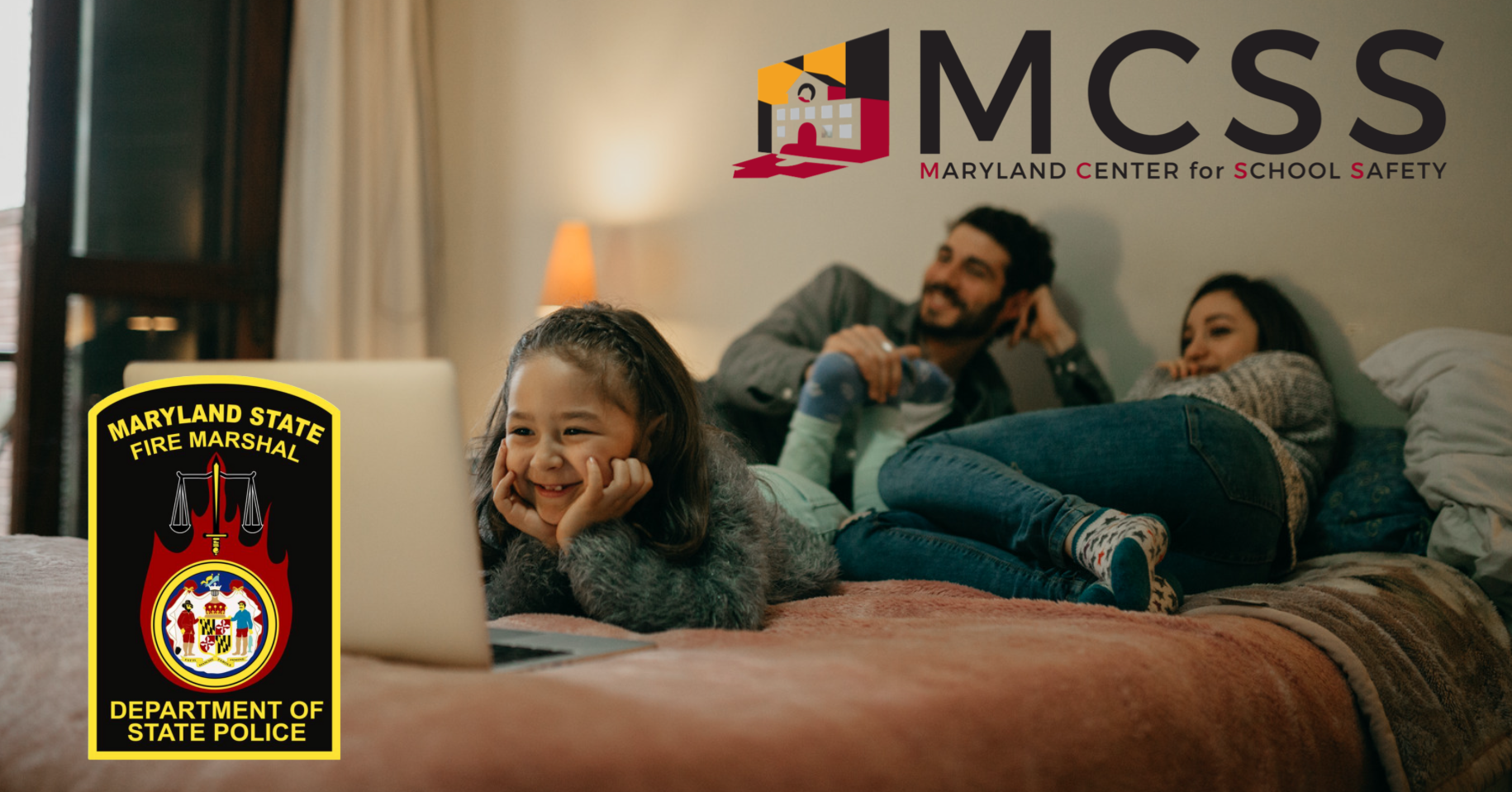Learning, Working, and Living from Home – Safely – this September and Beyond
The Office Of The State Fire Marshal And The Maryland Center For School Safety Share Important Reminders For All Marylanders
“With individuals of all ages spending much more time at home and engaging in activities that significantly contribute to the home fire problem, we must all recognize where potential hazards exist and what we can do to prevent fires,” stated State Fire Marshal Brian S. Geraci.
According to the National Fire Protection Agency, cooking, heating, and electrical equipment are among the leading causes of home fires year-round. 
Cooking is the leading cause of home fires and is responsible for nearly half (49 percent) of all reported home fires involving cooking equipment. Moreover, unattended cooking – when people aren’t keeping a close eye on their cooking – is the leading cause of home cooking fires.
“As many households are now dealing with unusual routines and out-of-the-ordinary circumstances, such as parents assisting their children with virtual learning, there’s greater potential for distracted cooking,” said Geraci.
NFPA statistics show that heating equipment is the second-leading cause of home fires, resulting in 52,050 home fires each year. Electrical distribution or lighting equipment is involved in an annual average of 35,100 home fires.
“As we head into autumn, heating systems are increasingly in use, and in many cases, for more hours than usual since many individuals are learning and working from home full time,” said Kate Bryan Hession, Executive Director of MCSS.
 “Individuals of all ages are often using the same outlets or – because of crowded home environments -rarely used outlets to charge phones, laptops, and other digital equipment. Both of these scenarios also present potential fire hazards. We want to ensure that all members of Maryland households put safety first when living, learning, and working from home, and the start of the school year is a perfect time to remind ourselves of how we can do just that.” Hession added.
“Individuals of all ages are often using the same outlets or – because of crowded home environments -rarely used outlets to charge phones, laptops, and other digital equipment. Both of these scenarios also present potential fire hazards. We want to ensure that all members of Maryland households put safety first when living, learning, and working from home, and the start of the school year is a perfect time to remind ourselves of how we can do just that.” Hession added.
With this in mind, OSFM and MCSS remind the public to use best practices for staying fire-safe during the COVID-19 pandemic and beyond:
Cooking
- Stay in the kitchen while you are frying, boiling, grilling, or broiling food. If you leave the kitchen for even a short period of time, turn off the stove.
- If you are simmering, baking, or roasting food, check it regularly, remain in the home while food is cooking, and use a timer to remind you that you are cooking.
- Keep anything that can catch fire — oven mitts, wooden utensils, food packaging, towels or curtains — away from your stovetop.
- Ensure all handles are turned inward, away from where someone can grab a hot handle or tip a pan over
- If you have young children in your home, create a “kid-free zone” of at least 3 feet (1 meter) around the stove and areas where hot food or drink is prepared or carried.
Heating
- Keep anything that can burn at least three feet (one meter) away from heating equipment, like the furnace, fireplace, wood stove, or portable space heater.
- Have a three-foot (one meter) “kid-free zone” around open fires and space heaters.
- Never use your oven to heat your home.
- Remember to turn portable heaters off when leaving the room or going to bed.
- Always use the right kind of fuel, specified by the manufacturer, for fuel-burning space heaters.
- Install and maintain carbon monoxide (CO) alarms to avoid the risk of CO poisoning. If you smell gas in your gas heater, do not light the appliance. Leave the home immediately and call your local fire department or gas company.
Electrical
- When charging smartphones and other digital devices, only use the charging cord that came with the device.
- Do not charge a device under your pillow, on your bed, or a couch.
- Only use one heat-producing appliance (such as a coffee maker, toaster, space heater, etc.) plugged into a receptacle outlet at a time.
- Major appliances (refrigerators, dryers, washers, stoves, air conditioners, microwave ovens, etc.) should be plugged directly into a wall receptacle outlet. Extension cords and plug strips should not be used.
- Check electrical cords to make sure they are not running across doorways or under carpets. Extension cords are intended for temporary use
Finally, it’s vitally important to remember that smoke alarms should be located on every level of the home, in each bedroom, and near all sleeping areas. Test them monthly to make sure they’re working. NFPA also strongly encourages households to develop and practice a home escape plan to ensure that everyone knows what to do in a fire and can escape quickly and safely.

